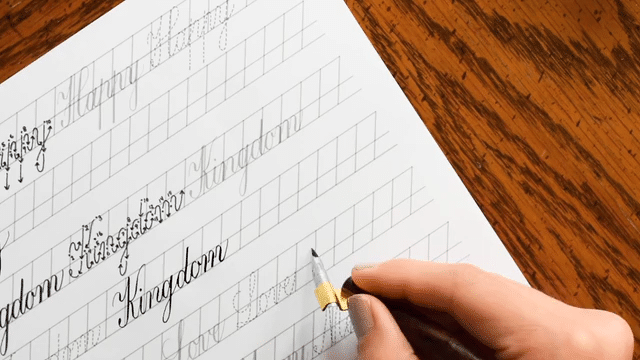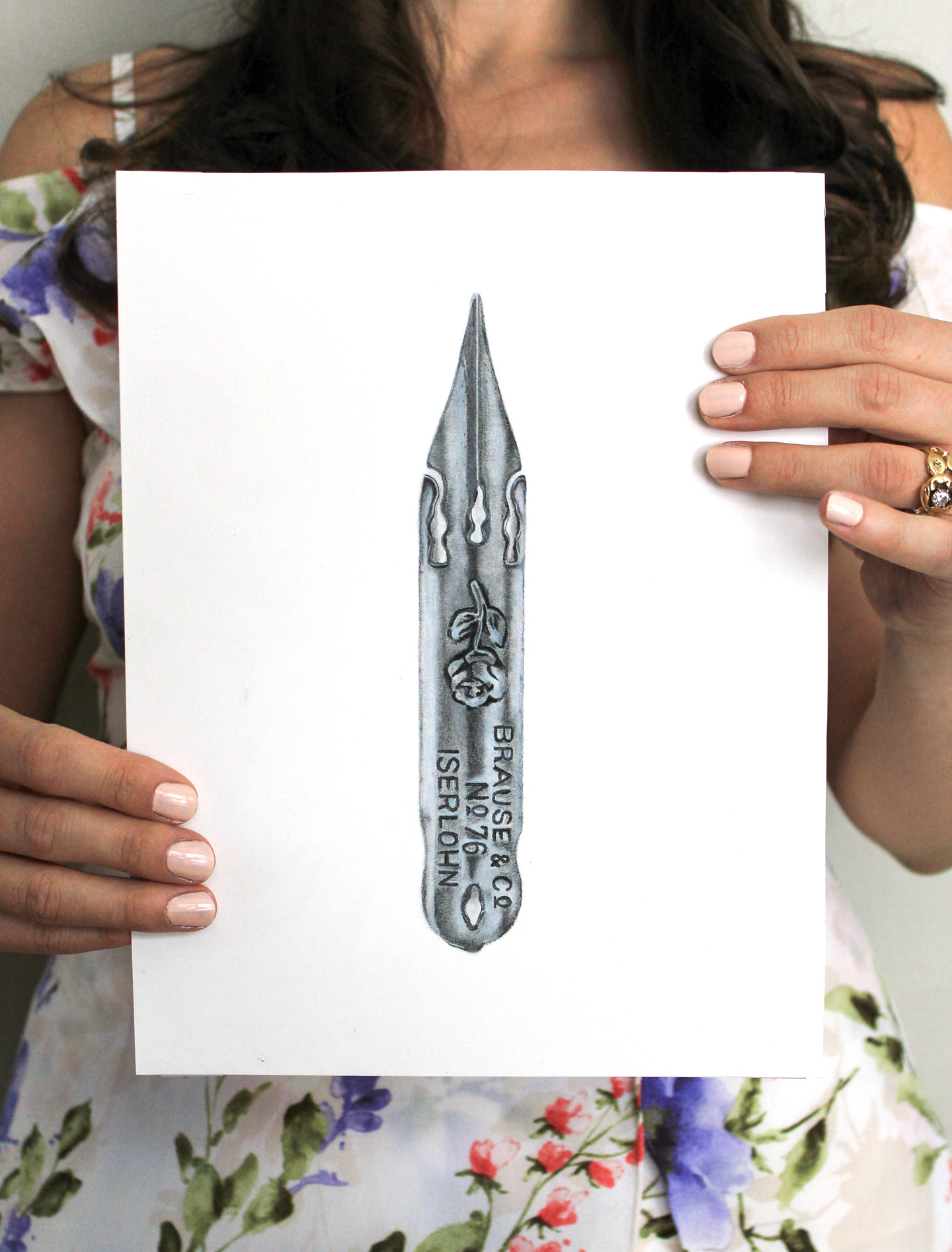
A few days ago, artist Danny Darr sent me an email showcasing a DIY envelope stencil he had created to facilitate perfect envelope spacing without a light box or measuring. Before Danny’s email, I hadn’t considered stencils much before … I mean, give me a light box, and I’m happy. But then I got to thinking: he could be on to something, especially where dark envelopes and/or writing with hand-lettering {vs. calligraphy} are concerned.
 {Danny’s Envelope Guidelines Stencil}
{Danny’s Envelope Guidelines Stencil}
It was at that point that I decided to make my own DIY envelope stencil, and to take you down this fateful envelope stencil-making path with me {there’s a free printable}! So, without further rambling, I’ll hop to how to make this wonderful device, and expound on a few different ways to use it!
How to Make a DIY Envelope Stencil
First, decide what size of envelope you want to make your envelope stencil for. I have chosen size A7.

Next, procure a piece of chipboard or thick card stock. Place your envelope on the chipboard/card stock and trace around it.

Cut out your card stock.

You’ll want to figure out what size you want your guidelines to be. 1/2″ seems reasonable for an envelope of this size, so that’s what I’ll go with. I’m not a real “math” person, so I’m going to walk you through how I measured this out and hope that it’s helpful if you’re anything like me!
- I know that I want the envelope stencil to have four 1/2″ rectangles that I can write in.
- I want 1/3″ of space between each rectangle.
- (4 lines x 1/2″) + (the 3 lines in between x 1/3″) = 3″; that means that the calligraphy or lettering will take up 3″ of space.
My envelope is 5.25″ tall; 5.25″-3″=2.25″, which divided by 2 = 1.125″, so I know that there needs to be 1.125″ of space between the top of the envelope and the top of the first line; and 1.125″ of space between the bottom of the envelope and the bottom of the last line. Effectively, the first thing to do is measure the 1.125″ top line.

Next, measure a line 1/2″ under that. Then, measure a line 1/3″ under that, then 1/2″ under that, and so on and so forth, like the photo below. You’ll also want to draw a vertical line on either side; I made my lines 3/4″ from the edge.

To keep yourself from getting confused when it’s time to cut, draw a simple squiggly line in each 1/2″ box. This way, you won’t accidentally cut out the 1/3″ lines.

If you are working on an A7 envelope, like me, and you want to skip all the measuring, I have created a printable envelope stencil for you to download and use.

Now, take a ruler and a hobby knife {if you don’t have one, consider purchasing one; they are cheap and useful!}, then cut out the 1/2″ boxes.

I suppose a person could use scissors to accomplish this task, but it would be a bit difficult to get the line completely straight. If you are adamant about not getting a hobby knife, it doesn’t hurt to try with scissors!
Cut out all of the 1/2″ boxes, and you’ve got your envelope stencil!

I like drawing vertical guidelines so I can have an idea of spacing, but that’s optional. {Vertical guidelines are included on the printable envelope stencil template.}

At this point, your stencil is ready for use!
How to Use a DIY Envelope Stencil
I love using DIY envelope stencils for two things: hand-lettering, and making guidelines on dark envelopes. The stencil is intuitive when it comes to using it for hand-lettering. You simply put the stencil on top of the envelope, choose your writing utensil and style, then write the address!

For this address, I used Wishbone Style from Hand-Lettering for a Latté. Feel free to use left justification … that way, you don’t have to mess with centering! You can fill in the spaces in between the address lines with calligraphy, if you’re so inclined.

I used the Finetec palette to achieve that beautiful gold!

You don’t have to get fancy, though; you can also use the template for writing a simple style like Sans Serif:

I used the Sakura Gellyroll white pen to create the opaque white lettering.

The original purpose of Danny’s DIY envelope stencil, of course, was to provide a quick way to draw guidelines. I like using a light box for guidelines on light envelopes, but I enjoy using a stencil {and a soapstone pencil} on dark envelopes!

Once you’ve got the guidelines drawn, you can use them to keep your calligraphy straight. I don’t recommend creating a style that requires a guideline for lowercase letters {like the Janet}, but these guidelines are great for styles like the Kaitlin! Sometimes it’s nice to have a baseline to make sure your script is nice and straight, especially if you’re new to the Kaitlin calligraphy style.

If you plan on using a myriad of different envelope sizes, it doesn’t hurt to take a couple of hours to make a few different templates! Feel free to get creative; you can create templates with diagonal address lines as well as templates with different line sizes. You can also experiment with positioning your template in new, different ways on your envelopes for interesting effects.
I hope that this post helps you when it comes to creating perfectly addressed, evenly spaced envelopes! If you have any questions, of course don’t hesitate to ask. In the meantime, have a great weekend!
Warmly,



 {Danny’s Envelope Guidelines Stencil}
{Danny’s Envelope Guidelines Stencil}


















